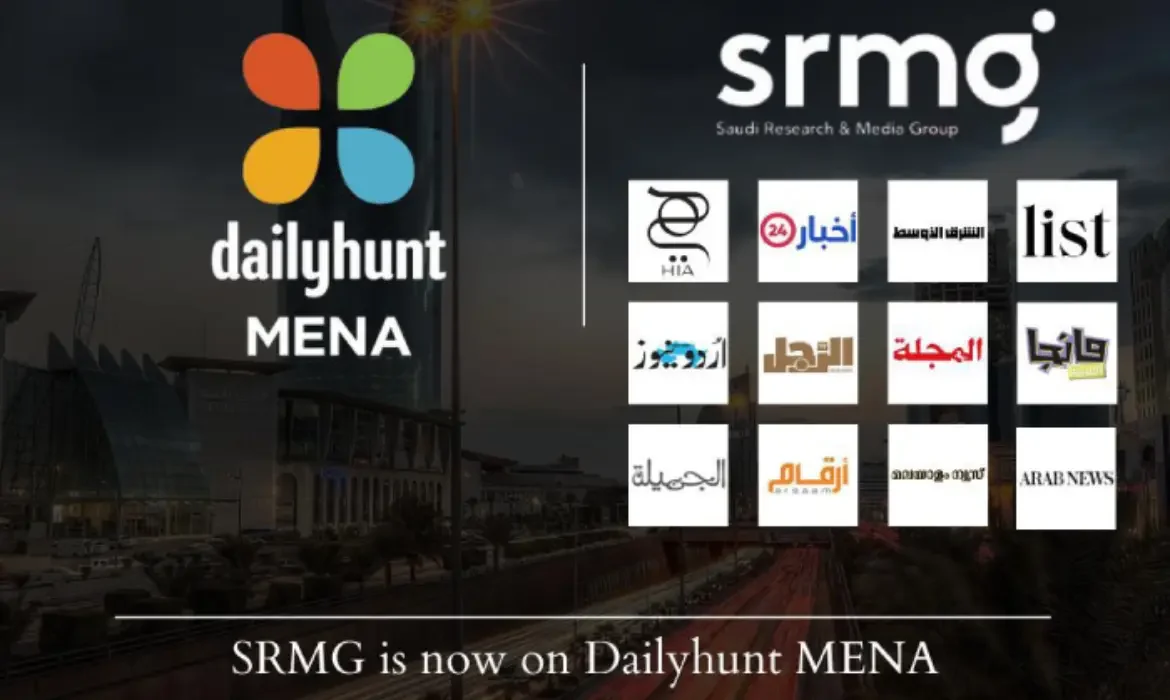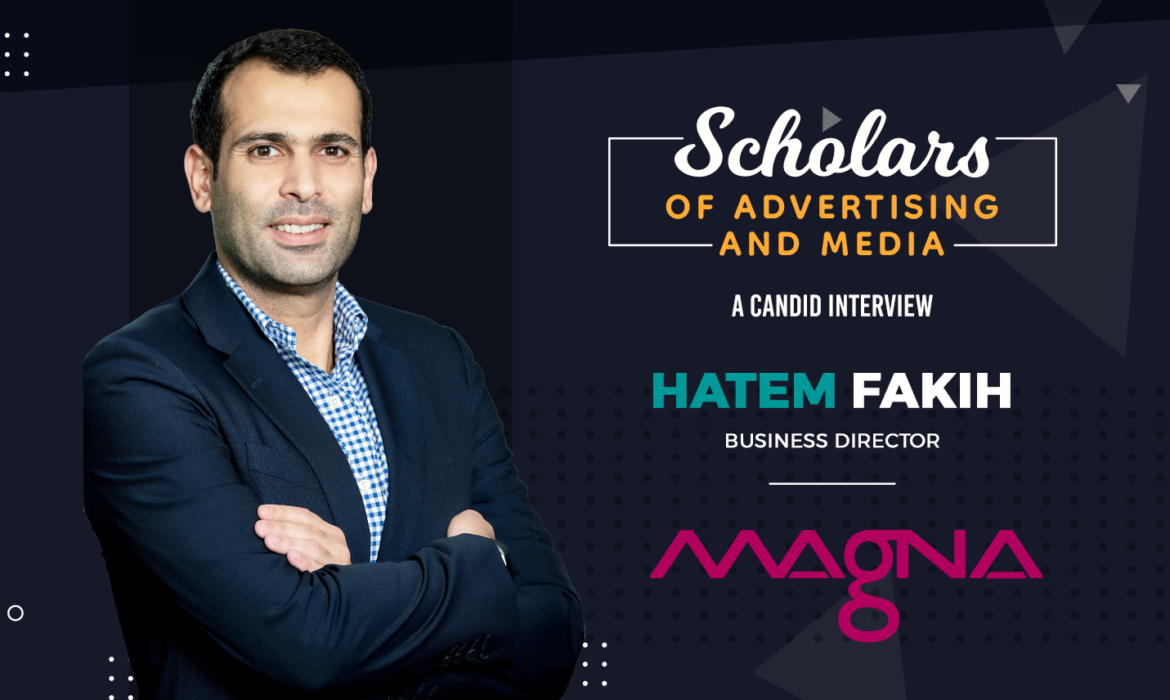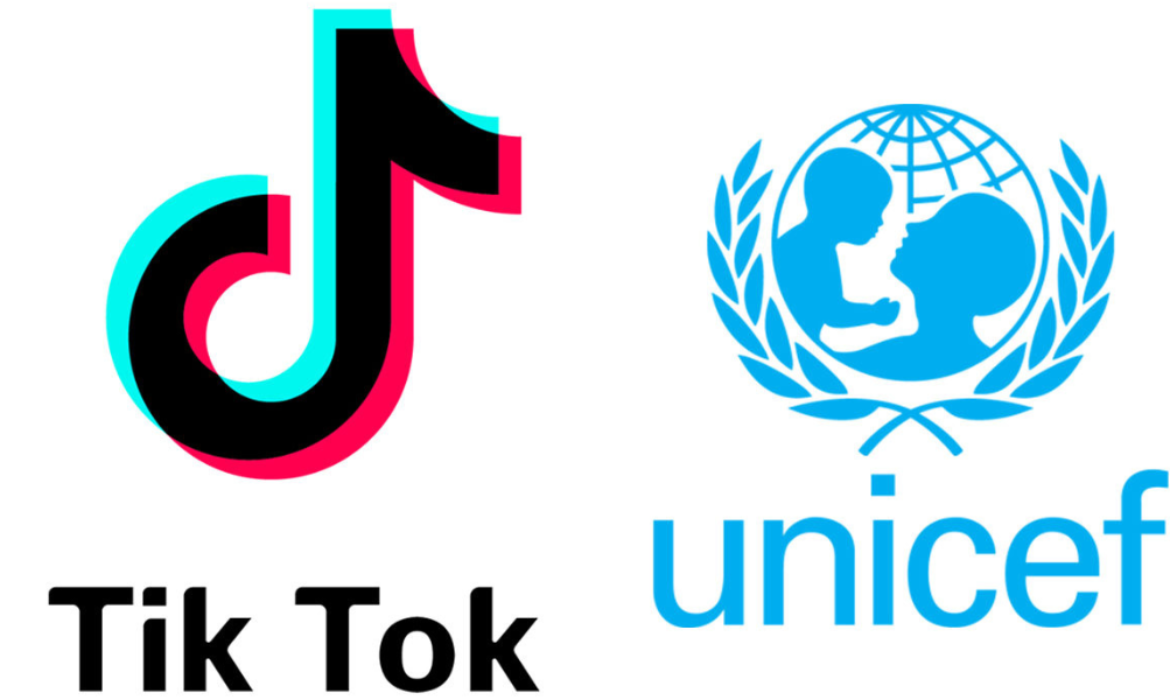Dailyhunt MENA and SRMG Join Hands for News Transformation
Dailyhunt MENA has recently established a strategic partnership with the esteemed Saudi Research and Media Group (SRMG). This collaboration signifies a significant expansion for Dailyhunt MENA within the MENA region, with the promise of elevating the Arabic media landscape to new heights. Through this alliance, there is a focused effort to enhance content offerings via Xpresso, a feature that delivers news in a story format, and Dailyhunt MENA, opening up lucrative business opportunities for the latter’s partners. This development stands as a noteworthy advancement in ongoing efforts to solidify a robust presence in the region.
As a technology-centric enterprise, Dailyhunt utilizes the power of artificial intelligence and machine learning to curate personalized feed suggestions for its users. The analysis of user engagement metrics, including click-through rates and time spent on content, enables Dailyhunt to continually refine its content curation strategies, ensuring they align seamlessly with user expectations. This commitment to leveraging advanced technologies highlights Dailyhunt’s dedication to delivering a tailored and engaging experience to its user base.
Read More: OMG MENA and The Neuron Partner to Transform pDOOH Advertising
Beyond Linguistic and Geographical Barriers
This collaboration positions Dailyhunt MENA as a key player in catering to its extensive user base, exceeding 350 million active monthly users across India and MENA, through the integration of SRMG’s publications. This will enhance user experience by providing them a platform for quick updates on local and global occurrences. Daily MENA will provide a comprehensive news ecosystem to a diverse user community.
The increasing mobile penetration in the MENA region presents a golden opportunity for innovative content delivery. Dailyhunt MENA is not only poised to promote SRMG’s Arabic content in the MENA region but is also set to expand its reach with content in English, Malayalam, and Urdu, specifically catering to the Indian subcontinent. The collaborative efforts with SRMG and the focus on linguistic diversity position Dailyhunt MENA as a frontrunner in delivering a seamless, localized, and enriched news consumption experience for users across the MENA region and beyond.
And what they said
As quoted by Campaign Middle East, Shekhar Iyer, Director and General Manager of Dailyhunt MENA, said:
“The amalgamation of SRMG’s content within Dailyhunt will enrich the MENA audience experience and align with their language needs, especially Arabic. This venture underscores Dailyhunt’s dedication to eradicating language barriers and delivering extensive news coverage to its multifaceted user community.
He further added
“It heralds an era where quality journalism surpasses geographical and linguistic confines, becoming universally accessible through the power of technology. This is a stride towards fostering a well-informed and interconnected global society, where content is not just passively consumed but actively experienced in novel and meaningful ways.
With AI and ML, we can revolutionize content curation by automating and optimizing various aspects of the process, resulting in a more tailored and engaging user experience.”
Read More: A Lookback At the 5 Best Christmas Ad Campaigns of 2023
Magna Global’s Hatem Fakih Reveals Strategies for Thriving in GCC’s Media Landscape
Hatem Fakih, the Business Director at Magna Global, brings a wealth of expertise to the dynamic world of media and advertising. His leadership navigates the complexities of the industry, ensuring growth, profitability, and a forward-thinking approach. In this exclusive interview, his insights delve into navigating GCC markets, leveraging technology, and fostering collaborative success.
Your tenure in the media and advertising industry has been long and varied. Could you share your reflections on how your journey has evolved along with your learnings and how these have been applied in your roles?
Throughout my extensive tenure in the media and advertising industry, I’ve navigated the dynamic GCC markets, rich in diversity and evolving consumer behaviors. An essential insight for me is the significance of understanding cultural intricacies shaping consumer preferences. The diverse demographics in the region demand a nuanced approach to media strategies.
I’ve learned to tailor campaigns to resonate with local values, ensuring genuine connections with the community. My journey highlights technology’s pivotal role in shaping the media landscape. The rapid adoption of digital platforms and the prevalence of social media emphasize staying abreast of technological trends. Leveraging data-driven insights and innovative digital marketing approaches is crucial for effective audience engagement.
In various roles, I’ve applied these learnings by fostering adaptability and innovation. Encouraging a forward-thinking mindset and openness to emerging technologies is vital for staying ahead in this ever-evolving market. Collaboration is a cornerstone of success in the Gulf market. Building strong relationships with local partners, influencers, and media vendors enhances campaign reach and deepens understanding of market dynamics. This collaborative approach navigates the intricacies of the GCC market, fostering long-term success.
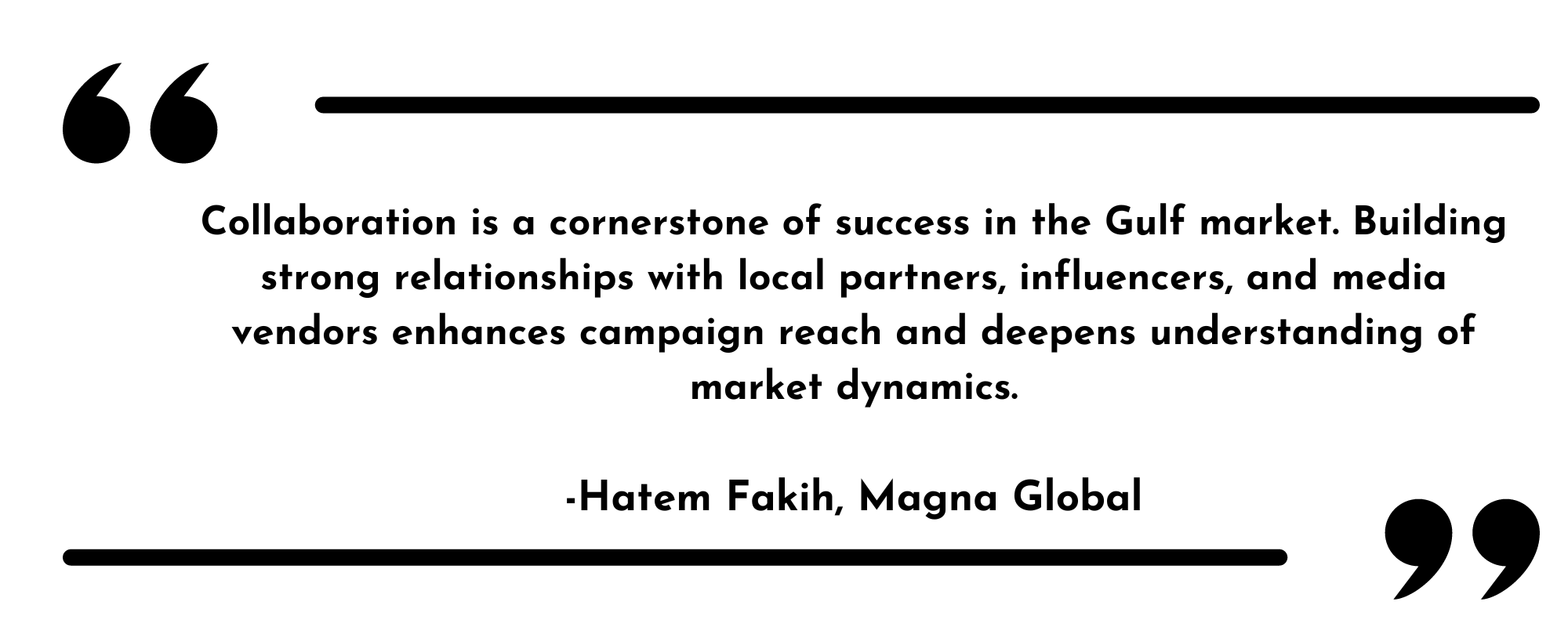
As Magna Global’s Business Director, how do you ensure that all the strategies you create align with your clients’ visions and marketing goals? What KPIs do you monitor and how do you ensure that they are met?
As the Business Director at Magna Global for the Gulf market, aligning strategies with clients’ visions and marketing goals involves a multifaceted approach.
i. Client Collaboration: We regularly engage with clients to understand their business objectives, long-term visions, and specific marketing goals. This includes conducting comprehensive briefings and workshops to gather insights and align expectations.
ii. Market Research & Analysis: Our delivered strategies are customized and tailor-made to resonate with market dynamics and target audiences and stay on top of market trends and advertisers’ activities.
iii. Customized Strategies and Agile Strategies Adjustments: Our approach is based on customized strategies that seamlessly integrate with clients’ brand identities, resonating with the GCC market’s cultural nuances. We ensure these strategies address specific challenges and opportunities unique to the region. Additionally, we remain agile and ready to adjust based on evolving market dynamics.
iv. Continuous Learning: We stay updated on emerging trends, technologies, and best practices in marketing to continually refine and enhance our strategies for optimal results.
How do you navigate the intricacies of the media landscape and keep updated with the current market and consumer trends?
Navigating the media landscape and staying updated with the current market and consumer trends in the Gulf region demands a multilayered approach, including but not limited to research, media consumption habits, local partnerships, cultural adaptability, and data and analytics.
Publishers are divided on Google’s third-party deprecation and whether it is a strategic mistake or something to embrace. What is your take?
As a professional, I see this as a significant development towards greater privacy, a user-centric approach, and data protection. However, in our region, we face certain challenges. This will affect our ad targeting and was evident when Apple updated their IOS, restricting advertisers without consent. Nevertheless, I also perceive this as a call for innovation within our industry—whether through new technologies or inventive approaches to reaching our audiences.
As a consumer, I’m becoming increasingly conscious of privacy, and there’s a growing demand for transparent and privacy-friendly practices. Media agencies and advertisers that embrace privacy-enhancing technologies may be viewed more favorably by users.
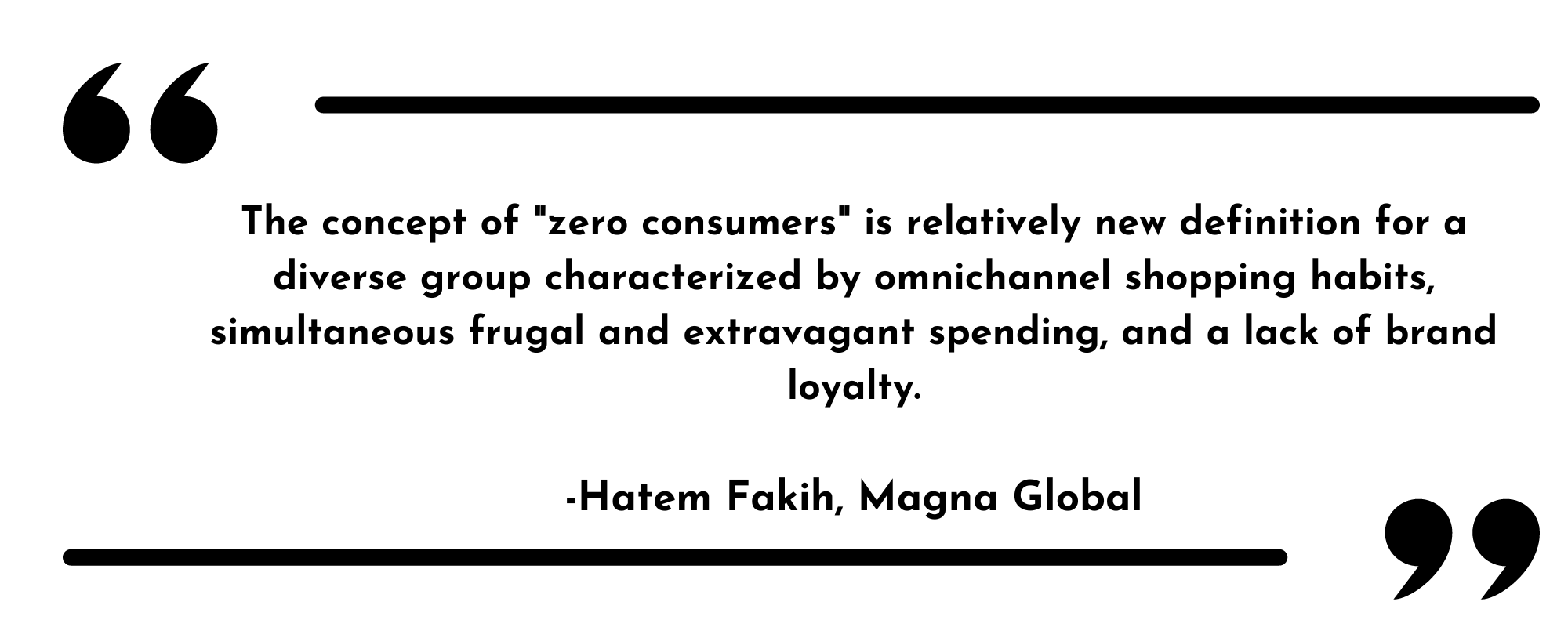
Changing spending habits, omnichannel shopping, and much more are changing how modern consumers or “zero consumers” shop. How can companies attract them and gain an edge over their competitors?
The concept of “zero consumers” is relatively new definition for a diverse group characterized by omnichannel shopping habits, simultaneous frugal and extravagant spending, and a lack of brand loyalty. Health and sustainability concern this group, though it doesn’t always translate into a willingness to pay more. Ignoring their preferences risks rendering companies irrelevant.
Consumer companies face the challenge of understanding and meeting the needs of zero consumers while staying ahead of technological, talent, and competitive trends. There are some defined imperatives to gain an edge over this group including reimagining the omnichannel experience, overhauling consumer propositions, scaling up personalization, and reshaping societal impact. The success of these strategies hinges on proper execution and adaptation to the changing landscape marked by evolving technology, talent competition, and shifting consumer behavior.
In recent years, big brands all over the world have adopted CGI or FOOH advertising because of its cost-efficiency and low engagement levels. How do you think this trend will progress?
CGI technologies empower brands to craft visually stunning and attention-grabbing content without the logistical challenges and costs tied to traditional methods. As technology advances, the quality of CGI continually improves, potentially driving increased adoption as brands seek more realistic and immersive ways to showcase their products or services.
Additionally, brands may leverage CGI for highly personalized and targeted advertisements, providing a more engaging and relevant experience for audiences. Another avenue is integrating CGI with AR and VR to create interactive and immersive experiences, fostering more engagement with out-of-home (OOH) advertising. However, this integration poses the challenge of differentiating between real content and CGI content.
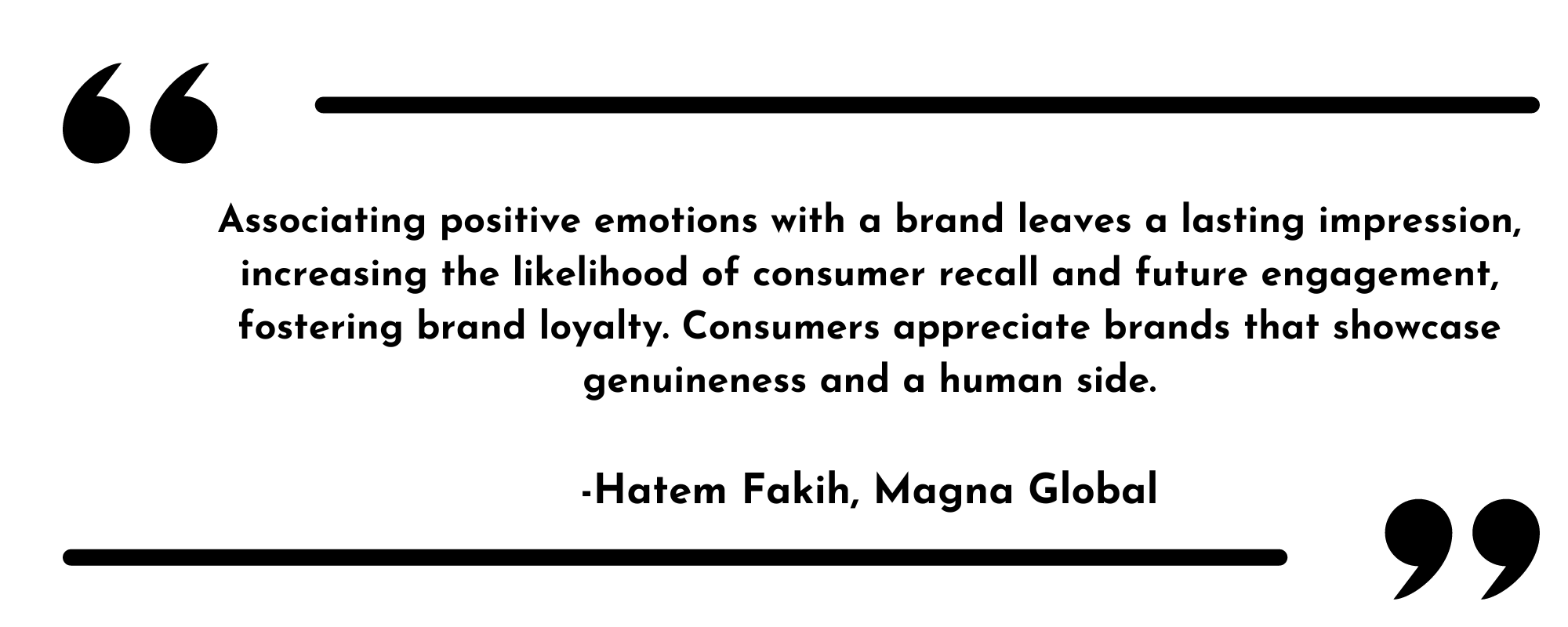
Brand-building isn’t enough in today’s consumer market. Consumers need unique brand experiences to keep coming back. What are the benefits of emotions being incorporated into marketing?
Presently in media, we’ve begun examining the attention metric, focusing on eliciting various emotions to create memorable and emotionally charged experiences. Associating positive emotions with a brand leaves a lasting impression, increasing the likelihood of consumer recall and future engagement, fostering brand loyalty. Consumers appreciate brands that showcase genuineness and a human side.
Addressing emotional needs can significantly enhance overall customer satisfaction. Brands attuned to and responsive to the emotional triggers of their customers are better positioned to craft products, services, and experiences aligning with customer expectations. This understanding plays a pivotal role in decision-making, influencing purchasing decisions and shaping consumer behaviors.
Emotional experiences possess a viral quality. When consumers have a positive emotional reaction to a brand, they’re inclined to share their experiences, contributing to word-of-mouth marketing and potentially creating viral content. This emotional connection amplifies the brand’s reach and impact.
If there is an ongoing or upcoming advertising/media trend that you would never want to bring back, what would it be and why?
Disruptive advertising formats and approaches are something that no one would like to see making a comeback. As media evolves, focusing more on entertainment, consumers are becoming selective in their content consumption. Disrupting this journey can lead to a negative perception of the brand or product being advertised.
TikTok Helped UNICEF Gather Funds of $200,000 for the Welfare of Children –
Key Insights:
- The global leader in short mobile videos inspired its community to raise awareness and funds for UNICEF in the latest challenge #JoyOfGiving.
- According to UNICEF analysis, 99% of children and young people under 18 are vulnerable and support disproportionately.
- The challenge was run during the holy month of Ramadan and received an overwhelming response with over 2.3 million views and achieving the donation goal of $200,000.
- TikTok hosted a number of celebrities and regional content creators in 17 thought-provoking live sessions.
- The funds will be utilized by UNICEF to deliver crucial resources and relief to children across the MENA region.

In recent times, TikTok has partnered with UNICEF MENA (the Middle East and North Africa) to help the community gather information about COVID-19 and its preventive measures.
Background
UNICEF is on frontlines worldwide with responders in this pandemic and provides them information and resources to keep children healthy and safe from sickness and violence. TikTok, a pioneer in short mobile videos with its latest challenge #JoyOfGiving is raising awareness and funds for UNICEF’s mission.
Be Smart: According to UNICEF analysis, the children and young people are vulnerable to coronavirus and urgent action can ensure that children don’t feel the impact of the COVID-19 crisis in the decades to come.
Details: The challenge #JoyOfGiving ran during Ramadan, the month of giving, invited TikTok’s community of content creators to help in the donation drive by participating in 17 thought-provoking Live sessions.
The campaign received an overwhelming response with over 2.3 million views, easily achieving the donation goal of raising $200,000. UNICEF will utilize these funds to deliver relief and resources to the children and affected communities across the MENA region.
The intrigue: TikTok hosted several celebrities and regional content creators like Yara (@yara), Balqees Fathi (@balqeesfathi), Khalid, and Salama Al Ameri (@khalidandsalama), Carmen Soliman (@carmensoliman), and Raya Abirached (@rayaofficial) for interactive sessions.
The session focused on UNICEF initiatives to provide essential supplies to children and personal experiences during COVID-19.

Image Credit: Campaign ME
UNICEF Mena hosted live sessions on its TikTok page featuring renowned musician and composer Jad Rahbani and senior nutrition advisor Vilma Taylor.
The bottom line: The #JoyOfGiving challenge is an initiative by TikTok for the MENA region to spread positivity in adverse times and raise awareness of the critical issues.
Read on: Dubizzle Launches Their Own Self-served Advertising Platform

